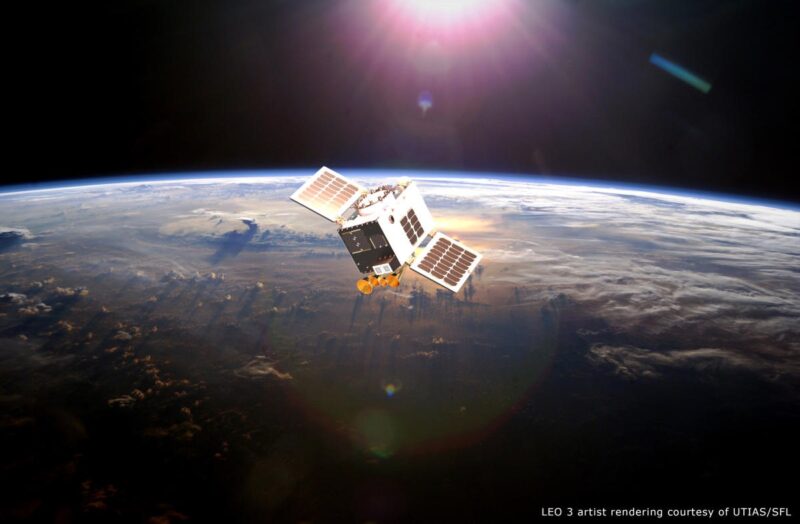Telesat Orders Lightspeed Phase 1 LEO Demo Satellite Replacement from Toronto’s SFL

LEO 3 artist rendition courtesy of SFL
Canadian satellite operator Telesat announced Tuesday that it contracted Space Flight Laboratory (SFL) to build a new demonstration satellite named LEO 3, providing its first update on the development of its Lightspeed LEO constellation since announcing its Q1 results earlier this month.
Telesat said it was decommissioning the Phase 1 LEO satellite it launched in January 2018, built by Surrey Satellite Technology, to support live demonstrations of Low-Earth Orbit (LEO) applications in the run-up to the unveiling of its Lightspeed branding in 2021. Telesat will use SFL’s LEO 3 to provide continuity for customer and ecosystem vendor testing campaigns following the decommissioning. Once launched and activated, Telesat plans for LEO 3 to operate under an existing ITU network filing for the Lightspeed constellation.
Toronto-based SFL said it is building Telesat’s LEO 3 on a “relatively aggressive development schedule.” LEO 3 is designed as a compact microsatellite measuring 30 x 30 x 45 centimeters with a mass of 30 kilograms — a form-factor based off SFL’s Defiant microsatellite. SFL said it has already integrated the communications payload with the LEO 3 bus and successfully completed vibration and electromagnetic compatibility testing of the spacecraft. Additional tests are ongoing.
The Defiant satellites currently in orbit support a range of applications related to Earth observation, atmospheric monitoring, ship tracking, communication, radio frequency (RF) geolocation, technology demonstration, space astronomy, solar physics, space plasma, and other scientific research.
“We’re excited to partner with SFL, who has as a proven track record for building high-performing satellite platforms — on time and within budget,” said Telesat CTO Dave Wendling. “LEO 3 will serve an important role for low-latency customer applications testing, and for supporting LEO antenna and modem development efforts in advance of our Telesat Lightspeed satellite deployment.”
Telesat’s Lightspeed development process has hit several bumps during the past few years. Original plans for the constellation included nearly 300 satellites, but Telesat decreased the size by 100 satellites after it encountered financing issues. During the company’s recent Q1 results call, Telesat DEO Dan Goldberg said the operator was still looking for equity investors specifically for Lightspeed, which he now estimates could start launching in 2026. Telesat initially hoped to start launching Lightspeed this year.